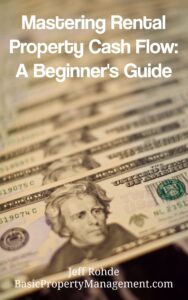If you’ve spent any time poking around rental property strategies, you’ve probably stumbled across the 1% rule. The 1% rule in real estate says a rental property’s monthly rent should hit at least 1% of its purchase price—basically, it’s a quick-and-dirty way to decide if a deal might be worth your time.
This calculation has become a go-to for investors who want to size up potential deals fast and compare what’s out there without drowning in spreadsheets.
Figuring out how to use the 1% rule can save you hours of analysis. It helps you weed out properties that just don’t fit your goals.
It’s a decent benchmark, but knowing when to use it—and when to dig a little deeper—can make all the difference in your search. If you’re curious about how to actually calculate the 1% rule and what it means for your investments, you’re definitely in the right spot.
Key Takeaways
- Get a handle on what the 1% rule is and why it matters in real estate.
- See how to size up investment properties using this rule.
- Figure out when to rely on the 1% rule and when it’s time for a deeper dive.
Understanding the 1% Rule in Real Estate
The 1% rule gives investors a quick way to screen rental properties for investment potential. It lets you estimate if a property’s rental income might cover financing and basic operating expenses—without a ton of math.
Definition of the 1% Rule
The 1% rule says a property’s monthly rental income should be at least 1% of its purchase price. So, if a property costs $200,000, you want to see at least $2,000 per month in rent.
It’s really just a filter before you get into the weeds of property analysis. This rule doesn’t guarantee you’ll make money, but it can point you toward deals worth a closer look.
The idea is to make sure the income can cover your mortgage payments and other costs. That way, you lower the risk of ending up with negative cash flow.
Plenty of investors use the 1% rule early in their property search. It helps you quickly toss out properties that probably won’t be cash flow positive.
You’ll still need to crunch the exact expenses eventually, but this rule is a handy first-pass screen.
How the 1% Rule Works
To use the 1% rule, do a simple calculation: divide the property’s price by 100, or just multiply the price by 1%. That number is the minimum monthly rent you want to see.
For instance, if you’re eyeing a home at $150,000, the 1% rule says you should shoot for at least $1,500 in monthly rent.
| Purchase Price | 1% Monthly Rent Required |
|---|---|
| $100,000 | $1,000 |
| $200,000 | $2,000 |
| $350,000 | $3,500 |
Now, this rule is just a guide—it won’t guarantee you’ll make a profit. Local market conditions, taxes, insurance, and repairs can all mess with your bottom line.
Use the 1% rule as a starting point, but always follow up with a full financial analysis. For more detail, check out Investopedia’s breakdown of the 1% rule in real estate.
Historical Context
The 1% rule came about as a practical shortcut for investors who needed to screen deals fast—especially before online listings and sophisticated analytics tools like DealCheck.io existed.
Back in the day, the 1% rule lined up pretty well with typical rents and home prices in a lot of U.S. markets. But as home values and interest rates shifted, the rule’s usefulness started to depend more on location and the current market cycle.
Honestly, in today’s expensive urban areas, rental yields often fall below 1%, so the rule’s less reliable there. In cheaper regions, it can still work as a quick filter. If you want to see how the 1% and 2% rules stack up in different markets, check out Azibo’s guide on the 1% rule vs. 2% rule in real estate investing.
Evaluating Investment Properties With the 1% Rule
The 1% rule is a quick screening tool for rental property investments. With a simple formula, you can estimate if a property might bring in enough rent—though you’ve got to remember its limitations and how it stacks up against other methods.
Step-by-Step Calculation
First, figure out the property’s purchase price or current fair market value and estimate the monthly rent it could realistically earn. Take 1% of the purchase price—so for a $200,000 property, that’s $2,000.
Then, compare that number to what you think you can actually get in rent. If the expected rent meets or beats 1% of the price, the property might have potential to cover your mortgage, taxes, and insurance.
Here’s a simple example:
- Purchase Price: $200,000
- Monthly Rent Goal (1%): $2,000
- Estimated Rent: $2,100
Since $2,100 is above $2,000, this property passes the initial 1% test.
Limitations and Pitfalls
The 1% rule is just a screening tool—it doesn’t guarantee profit. It skips over a lot of costs, like repairs, vacancies, management fees, and changing market conditions.
In pricey areas, hardly any properties meet the 1% threshold because home prices are high and rents just don’t keep up. On the flip side, in cheaper markets, you might find lots of properties like foreclosures that fit the rule—but they could come with headaches like low tenant demand or not much chance for appreciation.
If you only use the 1% rule, you might pass up great deals or, worse, choose properties with hidden problems. Always look at other financial numbers before you pull the trigger.
Comparing to Other Investment Rules
People often use the 1% rule alongside other guidelines, like the 2% rule or metrics such as cap rate and cash-on-cash return. The 2% rule is even stricter—it wants rental income to hit 2% or more of the purchase price, which is pretty rare these days.
Cap rate looks at overall returns against the purchase price and operating expenses. Cash-on-cash return focuses on how much you’re actually making on the cash you put in each year.
Mixing a few of these metrics gives you a fuller picture and helps you decide if a property really fits your strategy. Don’t just rely on a single rule.
Frequently Asked Questions
The 1% rule has become a favorite quick-check for real estate investors sizing up rental properties. If you want to use it wisely, you should know how the rule works, how it’s different from similar benchmarks, and where it falls short.
How do you calculate the 1% rule in real estate investments?
Multiply the property’s purchase price (including repair costs) by 1%. That’s your target minimum monthly rent.
So, if the property’s $200,000, you want at least $2,000 in monthly rent. For more on this, check out Orchard’s explanation of the 1% rule.
What are the limitations of relying on the 1% rule when evaluating properties?
The 1% rule only looks at rent compared to purchase price and repairs. It ignores other big expenses like taxes, insurance, vacancies, management fees, and maintenance.
In hot or fast-appreciating markets, the rule might not match up with what you can actually get for rent. Sometimes it’s just too simple for tricky investment situations. There’s a solid breakdown of the 1% rule’s limitations if you want to dig deeper.
How does the 2% rule differ from the 1% rule in real estate?
The 2% rule is similar but way more aggressive. It says the monthly rent should be at least 2% of the total purchase price, including repairs.
Honestly, hitting the 2% rule is rare in most housing markets. It usually only works for certain low-cost properties that come with higher risks.
Can the 1% rule be applied to real estate markets nationwide?
Not really. The 1% rule doesn’t hold up in high-priced metro areas where property values are way above what you can get for rent. It’s more doable in places with lower property costs.
If rent-to-price ratios are low in a market, you probably won’t find properties that fit the rule. Investors should really adjust expectations based on what’s happening locally.
Is the 1% rule a reliable measure of rental property performance?
The 1% rule can help you filter properties fast, but it’s not a replacement for a real analysis. It skips over vacancies, operating expenses, and the effects of financing.
Use it as a starting point, then check out cap rate, cash flow, appreciation, and other financial details before you make any big decisions.
What alternative strategies to the 1% rule exist for real estate investors?
You might look at the cap rate, cash-on-cash return, or even dig into detailed financial pro formas when analyzing properties. These approaches let you weigh both the income and the expenses, so you get a fuller sense of returns and risk.
Some folks pay close attention to neighborhoods they think will appreciate. Others hunt for properties they can spruce up to score higher rent.
Mixing these strategies could give you a wider, maybe even more realistic, view of a property’s potential.
Tired of second-guessing your investment numbers?
Learn how to find profitable real estate deals.
Get instant access to professional-grade property analysis tools from DealCheck.io and start evaluating properties in minutes!

Think managing rental properties is as simple as collecting rent? Think again.
Mastering Rental Property Cash Flow: A Beginner’s Guide unveils the intricate world of rental property finances that goes far beyond basic income collection.
From understanding market cycles to optimizing tax strategies, this guide provides you with the knowledge to maximize your potential returns. Learn how to navigate the complex landscape of expenses, capital improvements, and financial planning that seasoned property managers use to build wealth.
Don’t just own a rental property – master the art of turning it into a thriving, cash-generating asset that stands the test of time.
Get your copy now from your favorite bookseller:
- Amazon
- Books2Read for Apple, Barnes & Noble, Kobo, Scribed, and 8 more sellers with both eBook and paperback options available
- Payhip as a downloadable PDF
Ready to take your business to the next level?
- Subscribe to our newsletter
- Visit the learning center
- Learn more about our consulting services



